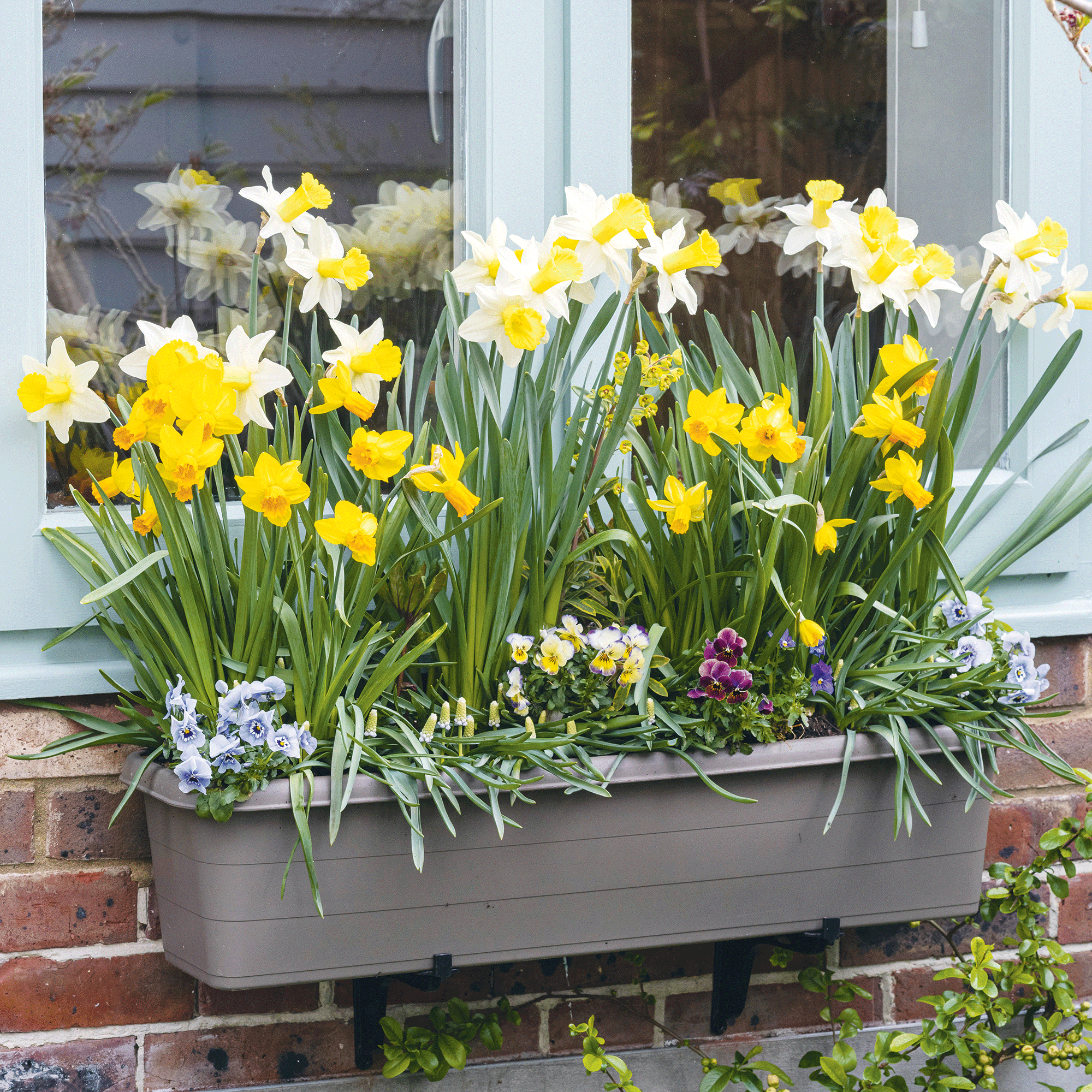
With their sunny yellow flowers, daffodils will brighten up any spring garden - even when April showers are in full force. And while they can bloom anytime between January and May, dead flower heads eventually replace these beautiful blooms. So, what do you do with daffodils after flowering?
No matter your garden idea, daffodils are a low-maintenance spring flower that will bloom year after year with very little interference. Perfect for container gardens or garden borders, daffodils are early bloomers that will flower for around 6-8 weeks before they start to fade. But when the flowers are spent, and the yellow blooms have disappeared from your garden, they can look extremely messy.
Although you may feel inclined to get your hands dirty and tidy them up, experts explain that patience is everything when it comes to daffodils. And if you follow these instructions, you can maintain a garden full of daffodils year after year.
What to do with daffodils after flowering
Knowing when to plant daffodil bulbs is incredibly important, but caring for your bulbs while they’re flowering or at the end of their flowering period is also essential. In fact, the proper care and attention can actually make your daffodils last longer.

When the flowers have faded removing them is the best option. Steve Chilton, garden expert at LeisureBench, says: 'After flowering, you should deadhead daffodils immediately.'
You should find that the flower (and the seed pod) falls off easily when pinched between your thumb and finger. If it doesn’t, however, you may need to leave it a few more days. Then, you can add the spent flowers to your compost heap.
When you’ve deadheaded your daffodils, you may feel inclined to focus your attention on the foliage. In the past, many gardeners have even used elastic bands to tidy up these wild leaves to give them more structure and support. This isn’t advisable, though.
In an Instagram video, Alan Titchmarsh says, ‘Leave them to flop like that for six weeks after flowering. That allows the sunlight to get in there and photosynthesise through the leaves, make food and send it down to the bulb for next year’s flowers.’
If you do choose to remove the foliage earlier than that, you will find that next year’s daffodil crop includes fewer flowers. Not only that, but they’ll most likely be smaller, too.

So, keep the foliage in place and give it a boost with some much-needed TLC. Steve says, ‘I recommend continuing to fertilise and water (if required) your daffodils even after the flowers have faded, but while the foliage is still green. This is because it will help top up the plant's energy reserves in order to prepare for next year's blooms. Once the foliage has yellowed and has started dying back, you should stop watering and fertilising it as it no longer needs it.’
At this point, you can finally cut the foliage back to ground level if you want to, and you can do this with secateurs or garden scissors.
Then, you need to decide what you want to do about the daffodil bulbs. You can leave them in place or dig them up and store them somewhere dry, like in a hessian bag.
Budget Seeds' gardening expert, Craig Morley, explains, ‘You can leave the bulbs in the ground where they are, and they should grow back annually. You can dig the bulbs up to move them elsewhere if you wish, or temporarily move them so you can plant something else in that spot for summer.’
‘If you are leaving the bulbs in the ground, ensure that they do not get too wet through overwatering or heavy rainfall, as this may cause them to rot.’
So, the choice is yours.
What you'll need
FAQs
What should you do when daffodils have finished flowering?
When daffodils have finished flowering, deadheading them is the best course of action. You can simply pull off the spent flowers and seed pod and leave them to their own devices for the next six weeks.
Avoid the temptation to tidy up the foliage, as the extra sunlight will ensure next year’s flowers are even bigger and bolder. Instead, allow the leaves to absorb as much nutrients as possible until they turn yellow of their own accord.
When they’ve turned yellow, you can then cut the foliage back to the ground.
How do you prepare daffodils for next year?
The best thing you can do in preparation for next year’s daffodils is give them time to absorb as much nutrients as possible after flowering. In the six weeks following flowering, the foliage will photosynthesise through the leaves and send it down to the bulbs for them to store over the autumn and winter months.
Then, they’ll use those nutrients to flower even bigger and brighter next year. After this, you could either leave them in-ground until next year or dig them up to re-plant next year.
Do you cut back daffodils after they bloom?
You should always deadhead spent daffodil flowers after they have bloomed. This will allow the plant to concentrate on next year’s growth instead of producing seed. Don’t cut back the daffodil foliage until it’s turned yellow, though. This will normally be six weeks after flowering.
If you follow these rules, your daffodil crop will be even better next year.







